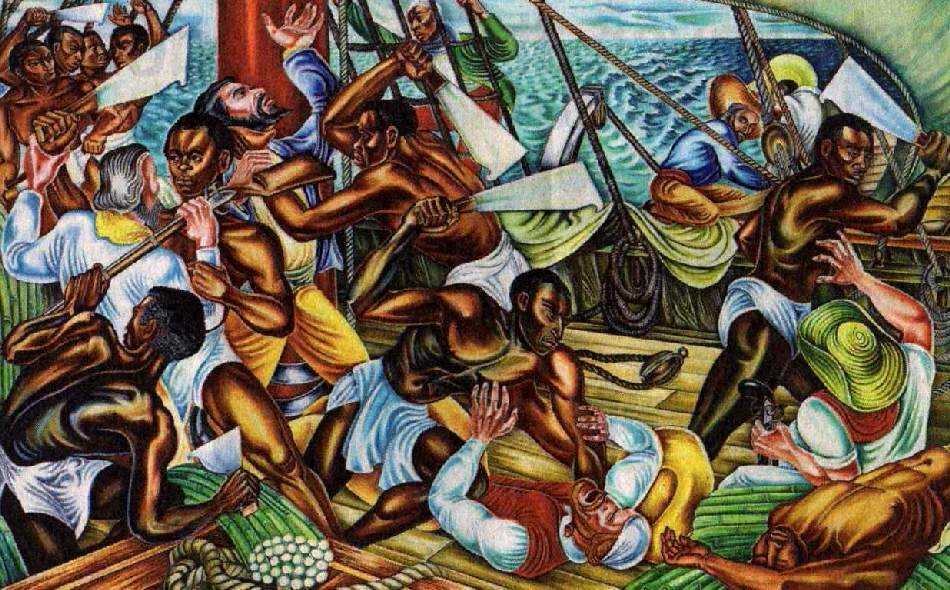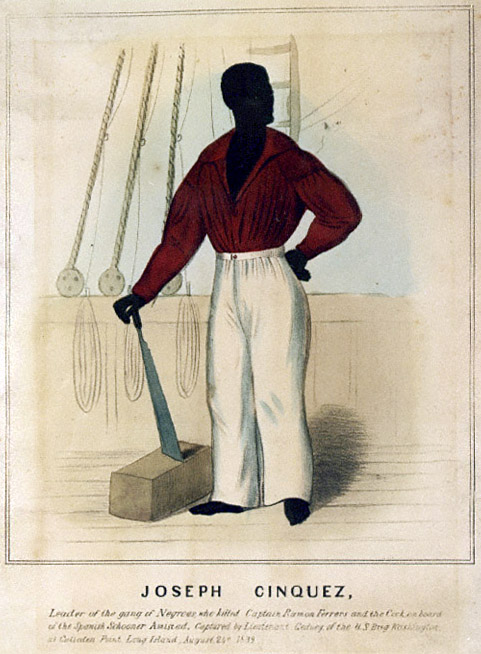
Over the course of more than two centuries, millions of Africans were captured and transported to North and South America where "the bondsman's 250 years of unrequited toil" -- to borrow Lincoln's phrase -- was used to exploit the New World's riches. The fruits of this labor -- notably the cultivation of cotton in the American South -- made slaveholding elites fabulously wealthy and was indispensable to the industrial development of Britain and later the United States.
"THE AMISTAD REBELLION: AN ATLANTIC ODYSSEY OF SLAVERY AND FREEDOM"
By Marcus Rediker. Viking Press.
In 2007, Mr. Rediker's "The Slave Ship: A Human History" was published. So graphic was his description of the Middle Passage and attendant horrors of the slave trade that Alice Walker, the author of "The Color Purple," confessed that she had to take to her bed for several days after reading it.
Now Mr. Rediker has written, what he himself has called, a more "hopeful" sequel to his earlier work: "The Amistad Rebellion: An Atlantic Odyssey of Slavery and Freedom." In this his sixth book, Mr. Rediker retells the improbable tale of a group of recently enslaved Africans, who in July 1839 seized control of a slave ship en route from Havana to a sugar plantation in central Cuba. The ship with the ironic name "La Amistad" -- "Friendship" in Spanish -- found its way to the United States, where it was captured by a naval survey vessel off the coast of Long Island. The Amistad rebels eventually won their freedom and the right to return to Sierra Leone in West Africa, following a dramatic hearing before the U.S. Supreme Court.

The story of the Amistad rebellion has been told before. "The popular memory of the Amistad rebellion has ebbed and flowed with the political tides," Mr. Rediker writes. "In its own day, it captured the popular imagination."
Days after the Africans were jailed in Connecticut for murder and piracy, accounts of the rebellion began to appear in newspapers. During their 19-month incarceration, the Amistad Africans were visited and later interviewed (once translators were found who understood their Mende language) by reporters.
When the Africans exercised on the green near the New Haven jail, many gawked at them, admiring their athletic prowess with little understanding of the deeper cultural significance of their acrobatics.

Artists flocked to the jail to sketch them and to create drawings depicting the uprising aboard the Amistad. Cinque, the leader of the rebellion, was a favorite subject. He was depicted as a swashbuckling pirate and, in a portrait by artist-abolitionist Nathaniel Joycelyn, in ways that suggested "a virtuous Roman republican citizen, or as Moses, staff in hand, having led his compatriots back to the Promised Land," Mr. Rediker writes.
But after the Civil War, fascination with the story quickly faded except among now aging former abolitionists and African-Americans.

In 1997 the movie "Amistad," produced by Steven Spielberg, brought the story of the rebellion to a nationwide audience. But as Mr. Rediker, among other historians, noted, the movie seemed to vindicate the U.S. justice system that, despite the Supreme Court's ruling in the Amistad case, was a bulwark of slavery in the United States. The high court in 1857, with some of the same justices still sitting on the bench, would issue its famous or infamous Dred Scott decision, denying Congress' power to bar slavery from the territories and declaring in words, which echo over the years, that blacks "had no rights which the white man was bound to respect."
But the movie was flawed in an even more significant ways: "[T]he history and movie have told only part of the story. The drama of the courtroom" -- in which former president John Quincy Adams was one of the lawyers for Amistad Africans -- "has eclipsed the original drama that transpired on deck of the slave schooner," Mr. Rediker writes.

In "The Amistad Rebellion," Mr. Rediker has sought to redress this by telling the tale from the perspective of the Amistad Africans, who, as he puts it, "turned the ship's wooden world upside down."
But how did they organize the rebellion? How did they overcome differences in ethnicity and language to achieve the necessary unity for a successful rebellion?
As he thought about these questions, Mr. Rediker developed a hypothesis: That the Poro, a secret society of men found among many West African peoples, might be a key to understanding the self-awareness of the Amistad Africans -- the basis for organizing and cooperation during the uprising. "All the adult men involved in the rebellion would have been members of the Poro in their native societies and therefore familiar with the type of self-government," he writes, "even if the rules and rituals varied from place to place and culture."

The great strength of this work -- aside from Mr. Rediker's vivid style as a writer and meticulous research -- is that he brings the Amistad Africans back to center stage where they have often been pushed to the side in a play, as it were, of their own making.
I must leave it to others with more knowledge of West African peoples and their societies to judge how successful Mr. Rediker's efforts have been. But he makes a convincing case. And I found it a pleasure to follow him as he put the pieces of evidence together into a compelling and inspiring narrative.
For much of his career as a scholar and a teacher, Marcus Rediker has written history "from below." He has tried to give voice to people whose stories have been ignored, but whose efforts have had far-reaching consequences. In the story of the Amistad rebels he has again found a fit subject for his efforts. (source: The Pittsburgh Post-Gazette).

Demand is strong and expected to increase over the coming year.
ReplyDeleteAltogether, one will find it easy to edit files, upload them and share them with others, as well
as take either single images and look at them for
instant review on the 480 by 360 screen. However, they are less likely to
say these tools helped them save money at a rate of 44 percent to 49 percent.
Here is my web blog samsung s4